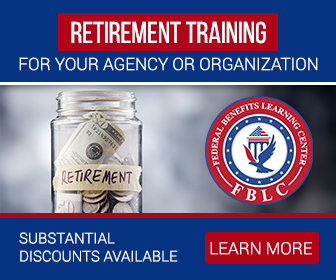Key Takeaways
-
Understanding the various Thrift Savings Plan (TSP) withdrawal options in 2025 can help you stretch your retirement savings more effectively.
-
Choosing the right withdrawal strategy may reduce taxes, preserve capital, and provide stable income throughout retirement.
The Role of TSP in Your Retirement Plan
As a government employee, your TSP serves as one of the three pillars of your retirement income, alongside your FERS or CSRS annuity and Social Security. Once you retire, the focus shifts from saving to distributing funds wisely. How you choose to withdraw from your TSP can significantly affect how long your retirement money lasts.
- Also Read: 5 Proposed Federal Policy Changes That Could Impact Your Pay, Retirement, and Job Stability in the Coming Years
- Also Read: 5 Special Retirement Perks That Law Enforcement Officers Get That Other Federal Employees Don’t
- Also Read: 3 Key Things to Watch for When Picking a FEDVIP Plan During Open Season to Get the Best Coverage
Understanding Your TSP Withdrawal Options
As of 2025, TSP offers several ways to take money out of your account:
Single Withdrawals
This is a one-time payment where you withdraw a specific amount from your TSP. It might make sense if you have a large expense or want to transfer funds to another retirement account. However, taking too much too quickly can increase your tax burden and shorten the life of your savings.
Installment Payments
You can choose:
-
Fixed dollar amount: You decide how much to withdraw monthly, quarterly, or annually. These continue until your balance runs out or you change the amount.
-
Life expectancy-based payments: TSP calculates the payment amount based on your age and account balance. This approach can help extend the life of your TSP.
Installments offer predictability, and you can switch between types or adjust the amount annually.
TSP Annuities
You can purchase a life annuity through TSP, which provides a fixed income for life. While annuities offer financial stability, they are irreversible once purchased. TSP uses your selected portion of the account to buy the annuity, and you no longer control that money.
Available types of annuities include:
-
Single life annuity
-
Joint life with spouse
-
Joint life with another person
You can also opt for features like:
-
Inflation protection
-
Cash refund or 10-year certain guarantees
Annuities reduce the risk of outliving your savings but limit flexibility.
Partial Withdrawals Combined with Installments
TSP now allows you to mix methods. You might take a partial lump sum and follow up with installment payments. This flexibility means you can tailor your withdrawals to match changes in spending needs or life events.
Important Tax Considerations
TSP withdrawals are generally taxed as ordinary income unless you have Roth contributions. Choosing the right withdrawal strategy can impact how much you pay in taxes each year.
-
Traditional TSP withdrawals are fully taxable.
-
Roth TSP withdrawals are tax-free if you’re at least 59½ and your contributions are at least five years old.
Spreading out withdrawals or using Roth funds strategically may lower your total lifetime tax bill. A tax advisor or licensed agent can help you model these outcomes.
Required Minimum Distributions in 2025
The age for beginning RMDs is 73 in 2025. If you delay withdrawals too long, you may be forced to take large taxable distributions.
RMDs apply to both traditional TSP and the traditional portion of a transferred IRA. Roth IRAs are not subject to RMDs, but Roth TSPs are.
Failing to take RMDs results in steep penalties. As of 2025, the penalty is 25% of the amount that should have been withdrawn, reduced to 10% if corrected in a timely manner.
To avoid surprises, mark your 73rd birthday and plan distributions accordingly.
Choosing the Right Strategy for Longevity
There is no one-size-fits-all answer to how you should withdraw your TSP funds. Your ideal strategy depends on:
-
Expected lifespan
-
Spending needs
-
Other sources of income
-
Tax bracket
-
Inflation expectations
Here are a few commonly used approaches:
The “Spend the Interest Only” Approach
Some retirees aim to preserve principal and only spend earnings from their TSP investments. While this is conservative, it may not provide enough income, especially if returns fluctuate.
The “4% Rule”
A common retirement planning rule suggests withdrawing 4% of your savings in the first year and adjusting for inflation each year. While useful as a starting point, it may need adjustments based on actual investment returns and personal needs.
Glidepath Withdrawals
This method adjusts withdrawal rates based on market performance. You might take more in strong market years and less during downturns. It requires discipline but can extend the life of your account.
How Inflation Affects Your Withdrawal Strategy
In 2025, inflation remains a real concern for retirees. Rising prices erode the purchasing power of your TSP balance. That means a withdrawal amount that works today might not be enough in five or ten years.
Installment payments based on a fixed dollar amount don’t account for inflation unless you adjust them manually. On the other hand, TSP life annuities can include inflation protection, but that reduces the initial monthly amount.
To manage inflation risk:
-
Consider investment allocations that outpace inflation
-
Adjust installment payments regularly
-
Balance withdrawals with Social Security cost-of-living adjustments (COLAs)
Making Mid-Retirement Adjustments
Retirement isn’t static. Life events, market changes, and health needs can all shift your spending. Fortunately, the TSP allows you to:
-
Change your withdrawal amount once per calendar year (for fixed installment payments)
-
Switch to life expectancy-based payments
-
Make a partial withdrawal in addition to scheduled payments
You can also stop installment payments and resume later. Having these options in 2025 means you don’t need to lock into a rigid plan that can’t adapt.
Avoiding Common Withdrawal Mistakes
Some of the most frequent TSP missteps in retirement include:
-
Withdrawing too much too soon: Depleting your TSP too early puts pressure on other income sources.
-
Ignoring taxes: Taking large withdrawals in a single year can trigger higher tax brackets.
-
Delaying too long: Postponing withdrawals may lead to large RMDs and limited tax-planning options.
-
Failing to revisit the plan annually: Without reassessment, your strategy may no longer fit your life.
A smart move is reviewing your withdrawal plan annually with a licensed agent who understands government retirement benefits.
Your Next Steps for a Secure Retirement
In 2025, your TSP is more than a savings account—it’s a tool to shape your retirement lifestyle. Understanding how your withdrawal choices affect taxes, inflation, and long-term sustainability is essential to making it last.
You don’t have to figure it out alone. Speak with a licensed agent listed on this website to get personalized guidance tailored to your retirement timeline and income goals.









